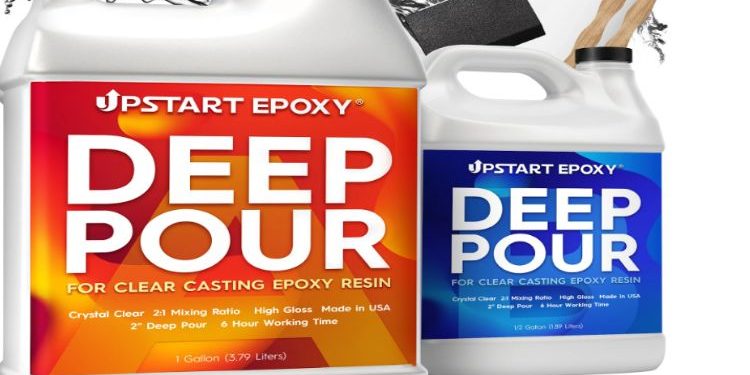Deep pour resin has become increasingly popular in recent years as a versatile and durable material for a wide range of projects. From furniture to art pieces, deep pour resin offers a unique aesthetic that is both modern and timeless. However, as with any material, it is important to consider the sustainability and environmental impact of using deep pour resin in your projects.
Firstly, it is important to understand what deep pour resin is made of. Deep pour resin is typically made from a combination of epoxy and hardener. Epoxy is a synthetic polymer that is created through the reaction of two chemicals: bisphenol A (BPA) and epichlorohydrin. Hardener, on the other hand, is typically made from amines or polyamides. While these chemicals are not inherently harmful, they can have negative environmental impacts if not handled properly.
One of the main concerns with using deep pour resin is the potential for waste. When working with deep pour resin, it is important to measure out the exact amount needed for your project. Any excess resin should be disposed of properly, as it can be harmful to the environment if not handled correctly. Additionally, any tools used to mix or apply the resin should be cleaned thoroughly to prevent waste and contamination.
Another concern with using deep pour resin is its potential impact on air quality. When working with epoxy and hardener, fumes can be released that are harmful if inhaled. It is important to work in a well-ventilated area when using deep pour resin and to wear protective gear such as gloves and a respirator.
In terms of sustainability, there are some concerns with the production and disposal of deep pour resin. The production process for epoxy involves the use of fossil fuels, which contributes to greenhouse gas emissions and climate change. Additionally, once deep pour resin has reached the end of its useful life, it can be difficult to dispose of properly. While some types of epoxy can be recycled or repurposed, others may end up in landfills where they can take hundreds of years to break down.
Despite these concerns, there are steps that can be taken to minimize the environmental impact of using deep pour resin in your projects. One option is to choose an eco-friendly brand that uses sustainable materials and production methods. Some companies offer resins made from bio-based materials such as soybeans or cornstarch, which have a lower environmental impact than traditional epoxy.
Another option is to use deep pour resin in combination with other sustainable materials such as reclaimed wood or recycled metal. By incorporating sustainable materials into your project, you can offset some of the negative environmental impacts associated with using deep pour resin.
One of the main environmental concerns with deep pour resin is its production process. The production of resin involves the use of petrochemicals, which are non-renewable resources. The extraction and processing of these resources can have negative impacts on the environment, such as air and water pollution, habitat destruction, and climate change.
Furthermore, the production process of deep pour resin also generates greenhouse gas emissions. These emissions contribute to global warming and climate change, which have far-reaching impacts on the environment and human health.
Environmental concern with deep pour resin is its disposal. Resin is not biodegradable and can take hundreds of years to decompose in landfills. Improper disposal of resin can lead to environmental pollution and harm wildlife.
In addition, the use of deep pour resin can also have indirect environmental impacts. For example, the transportation of resin from manufacturing facilities to consumers can generate greenhouse gas emissions from transportation vehicles.
There are ways to minimize the impact of using deep pour resin in projects. One way is to choose a manufacturer that uses sustainable practices in their production process. This includes using renewable energy sources and reducing waste generation.
Another way to minimize the impact of using deep pour resin is to use it sparingly and only when necessary. This reduces the amount of resin that needs to be produced and disposed of.
Proper disposal of deep pour resin is also important in minimizing its environmental impact. Resin should be disposed of in accordance with local regulations and guidelines. This may include recycling or disposing of it at a hazardous waste facility.
Using alternative materials that have less environmental impact can also be considered. For example, natural materials such as wood or stone can be used instead of resin for certain projects.
Finally, it is important to consider the longevity of your project when using deep pour resin. Because this material is so durable and long-lasting, it can help reduce waste by extending the life cycle of your project. By creating high-quality pieces that will last for years to come, you can reduce the need for frequent replacements and ultimately reduce your overall environmental impact.
In conclusion, while there are some concerns with using deep pour resin in your projects, there are steps that can be taken to minimize its environmental impact. By choosing eco-friendly brands, incorporating sustainable materials into your project design, working in a well-ventilated area with proper protective gear, measuring out exact amounts to prevent waste and cleaning tools thoroughly after use you can ensure that your use of deep pour resin aligns with sustainable practices while still achieving beautiful results for your projects.



